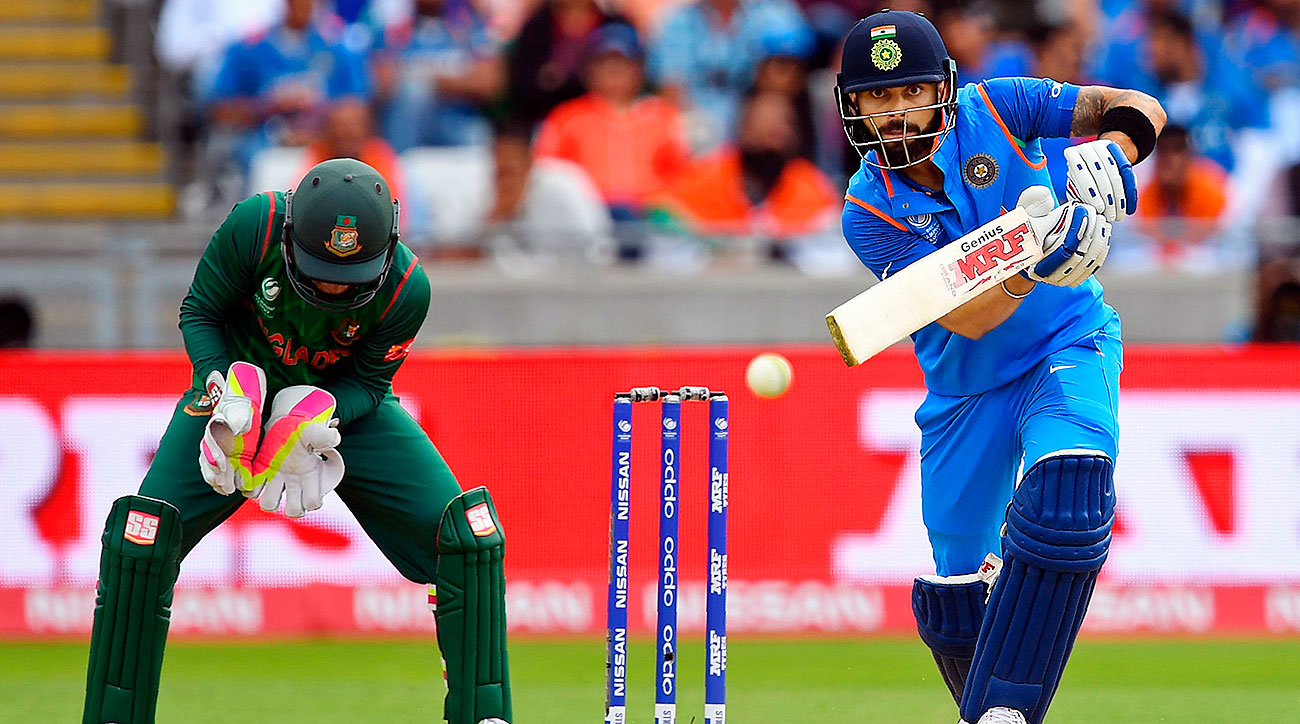Wicket Cool: What the reimagining of cricket can teach us about updating American sports
This article originally appeared in the July 24-31 issue of Sports Illustrated. Subscribe to the magazine here.
Having played a record 2,632 consecutive major league games, Cal Ripken Jr. may be the world's foremost expert on baseball's potential for monotony. So it was a positive sign when MLB hired the former Orioles infielder as an adviser on youth outreach in 2015. And it was even more encouraging a year later when Ripken acknowledged that in the wrong circumstances, "[baseball] can be the most boring sport in the world," and in fixing it, we ought to "forget the traditional mind-set." Well, so far: Traditionalist Mind-set 1, Iron Man 0.
Youth participation and viewership is sagging in many major sports, and leagues have responded by floating some radical proposals. MLB has flirted with a pitch clock. NBA execs have thrown around the term "four-point shot." And the NFL debated rewarding teams for kickoffs that flew through the uprights. Such proposals, however, inevitably bring hand-wringing and cries of blasphemy from traditionalists. It doesn't have to be this way.
Fixing A Hole: Assessing trade needs for division leaders, and who would make sense
An old game can learn new shticks. In 2002 cricket, a sport carrying 500 years of tradition, faced waning interest from fans and sponsors. In desperation the England and Wales Cricket Board ordered $320,000 worth of market research, and out came a proposal: Make cricket faster and more explosive. They called it Twenty20, since each team would be limited to 120 balls in 20 overs with six balls each (a traditional match is five days with at least 90 overs per day), shrinking a contest into a digestible three hours. The second 20 in the name is, well, gratuitous, as were other tweaks, including spectator Jacuzzis and in-game music blaring over the grounds.
Twenty20 was the game's most revolutionary step in 40 years. And unlike American sports' half-hearted attempts to entice younger generations, it worked.
Families flowed to the first matches, in 2003, and they kept showing up. The new game spread, and in 2008 it solidified its status as an accepted new form of an old sport. That's when India, having won the first T20 World Cup the year before, launched its own T20 league in the biggest cricket market on the globe. "We knew then that it would revolutionize cricket," says Tony Irish, the executive chairman of the Federation of International Cricketers' Associations.
In 2010 a survey in Australia showed that cricket was the seventh favorite sport among boys 14 and younger. Cricket Australia responded by forming the T20-based Big Bash League, hoping to revive the game's popularity. They succeeded: The sport's domestic TV contract has tripled in value over the last five years, and attendance has risen more than 20% a year for three straight seasons. In England, officials are creating a second T20 league, and cricket will return to BBC television for the first time in more than 10 years. Irish is no longer concerned about the game's financial future. Now he worries about players skipping the traditional international test matches for more lucrative and less-taxing T20 events.
There are still those who believe a grand sport has sold out to the masses, that entertainment ought not trump sporting purity. But Neil Carter thinks you can have both. Carter batted and bowled in Warwickshire's first T20 match in 2003 and at one point did so in more T20 games than anyone else. "When we first started, it was more like a bit of a hit and giggle and see what happens," he admits, but over time strategy developed, scoring increased. He and his teammates grew proud of nurturing the nascent format, and they came to enjoy the game's quirky innovations, including dunk tanks and mid-match speed-dating events. When he took a trip in 2002 to watch the Anaheim Angels, he enjoyed studying the pitchers' technique, but, he says, "it felt slow for me."
Slow down: The Yankees are leading a change in baseball by abandoning a principle of pitching
Now 42, Carter tries to watch a full session of cricket when he can, but he usually ends up going for highlight packages instead. He's busy, after all, working as a cricket pro at Bishops College in Cape Town, South Africa, coaching boys nine to 18, none of whom know a world without T20 cricket. No one is suggesting a dunk tank in the bull pen or a piñata in the penalty box, but suddenly a pitch clock doesn't sound so radical.
In cricket, gimmick has become tradition, a revolution birthed by Britain. That used to be an American thing






